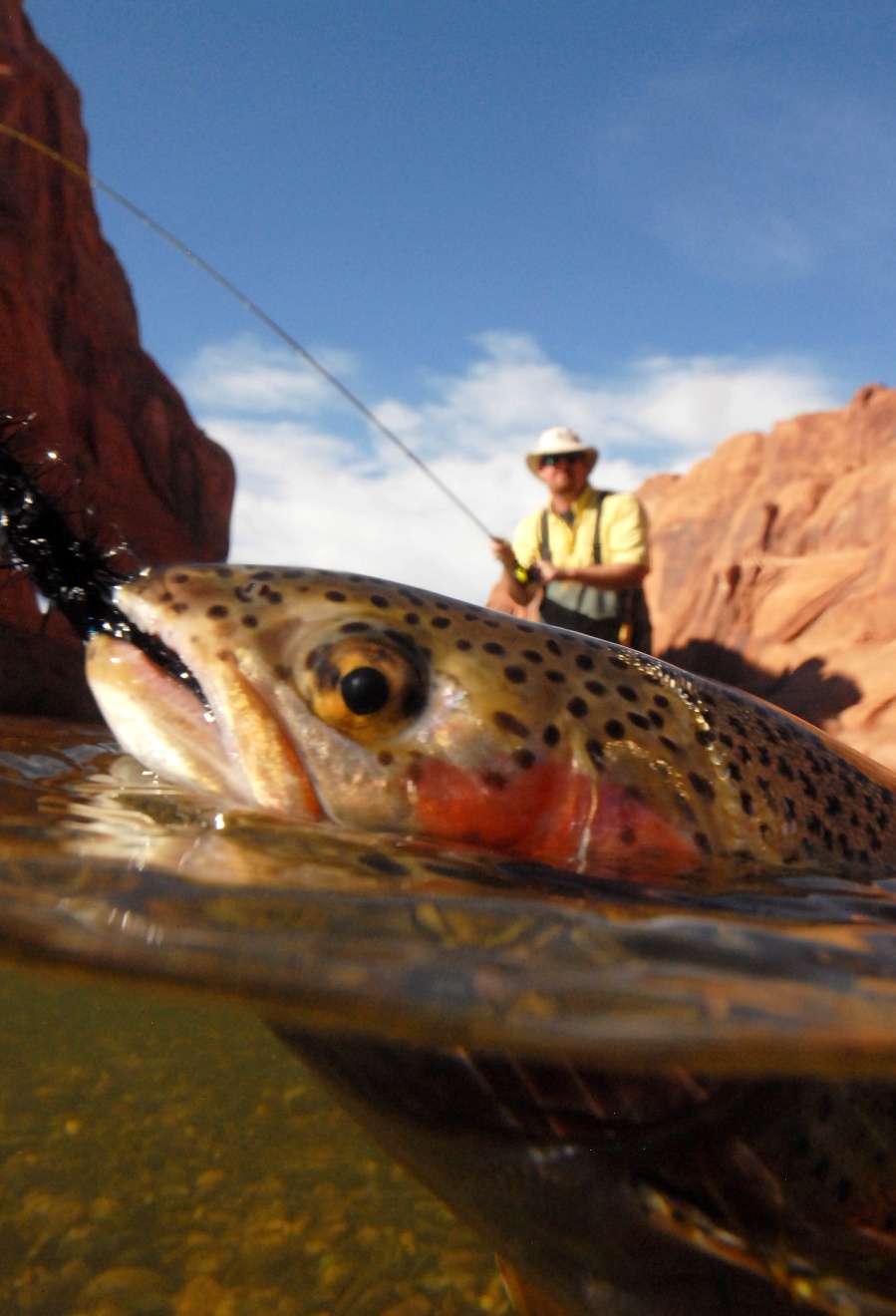By: Aaron Bunch
The basic premise of adaptive management is to learn from previous actions and adjust accordingly with the ultimate goal of reducing uncertainty over time. The goal of the Glen Canyon Dam Adaptive Management Program is to minimize impacts to ecological and cultural resources downstream from Glen Canyon Dam as the Colorado River runs through Glen, Marble, and Grand Canyons. The program is highly structured with many stakeholder groups represented including various state and federal agencies, tribal entities, and non-governmental organizations.
 |
| Glen Canyon Dam (Photo: Mitch Tobin) |
There are documented changes in physical habitat, water quality conditions, flow regime, and sediment transport in the Colorado River which can contribute to changes in fish populations in various ways—but we don’t always know or understand the extent of these changes. However, through the adaptive management framework we can try to learn how the system is changing, and in turn, how fish populations respond.
 |
| A beautiful rainbow trout from the tailwater (Photo: George Andrejko) |
A thriving tailwater rainbow trout fishery exists below Glen Canyon Dam in Arizona. The 15 miles between the dam and Lees Ferry is managed for a Blue-Ribbon trout fishery which attracts anglers from around the world. What we do know is that dam operations play a major role in influencing the trout population. Prior to 1991, the flow regime was characterized by extreme fluctuation, which prevented or limited natural fish reproduction, and thus the fishery was supplemented through stocking. Subsequently, the dam has produced modified low fluctuating flows intended to reduce flow variation, and the fishery responded by sustaining itself through natural reproduction. Other flows have been tried, most notably the high-flow experiments (HFE) conducted in 1996, 2004, and 2008.
 |
| High flows alter bottom habitats. (Photo: George Andrejko) |
The 2008 high-flow experiment caused managers to scratch their heads. The rainbow trout population increased to nearly three times the size it was the previous year, a response that was not seen during the previous two high-flow experiments. It turns out that the high flow did a good job at cleaning the gravels which provided quality habitat and hiding spaces for trout fry. The food base in the river was also enhanced because there was an increase in food items that were highly palatable for trout (i.e., black flies and midges).
 |
| Photo: George Andrejko |
 |
| Photo: George Andrejko |
A fourth high-flow experiment will be occurring on November 19, 2012. This experiment will take place in the fall, differing from the experiment in the spring of 2008. There are many unknowns as to how this will affect the trout population. One hypothesis is that there will be low over-winter trout survival following the fall HFE causing a decrease in the population, in part because sunlight during the winter does not always reach the river because of the angle of the sun and the steep canyon walls. The low light attenuation might slow the production of prey items at the low part of the food web that were scoured and displaced by the high flows, thus causing the area to be food-limited for trout until productivity picks back up in the spring and summer months. The future response of the trout population in Glen Canyon is unknown. However, a robust monitoring program is actively in place that should tell the story in months to come.
Stay tuned to see how these dam trout respond!
 |
| Photo: David Walsh |
References
Korman, J. and S.E. Campana. 2009. Effects of hydropeaking on nearshore habitat use and growth of age-0 rainbow trout in a large regulated river. Transactions of the American Fisheries Society 138:76-77.
Korman, J., M. Kaplinski, and T. Melis. 2011. Effects of fluctuating flows and a controlled flood on incubation success and early survival rates and growth of age-0 rainbow trout in a large regulated river. Transactions of the American Fisheries Society 140(2):487-505.
Makinster, A., W. Persons, and L. Avery. 2011. Status and trends of the rainbow trout population in the Lees Ferry reach of the Colorado River downstream from Glen Canyon Dam, Arizona, 1991-2009. U.S. Geological Survey Scientific Investigations Report 2011-5015 [http://pubs.usgs.gov/sir/2011/5015/].

No comments:
Post a Comment
Please leave a professional comment to create discussion about this topic. We reserve the right to remove any comment.